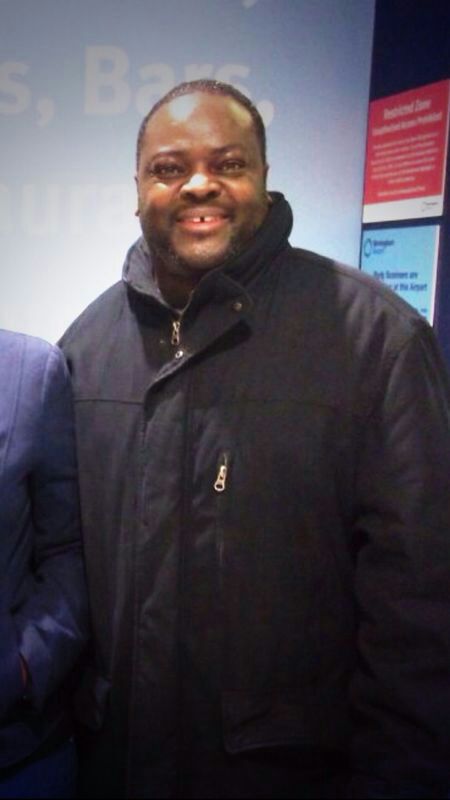Posted here on 25th March, 2014.
How Women Were Lured Out of the Home in the USA
By Areeba bint Khalid
Posted: 9 Jamad-ul-Awwal 1424, 27 June 2004
Posted: 9 Jamad-ul-Awwal 1424, 27 June 2004
From
the 1800s to the present day, family life in the West has remarkably
changed. While the West calls this change part of the women freedom
movement, a look at history may show otherwise.
America
before the 1800s was a farming country and ninety percent of the
population lived and worked on private farms. Households were mainly
self-sufficient--nearly everything needed was produced in the house. The
few things that could not be produced at home were bought from local
craftsmen. Some other things, especially imports from Europe, were
bought from stores. Males would take care of the fields and females
would take care of the home. In addition, they would engage in spinning,
knitting, weaving, and taking care of the farm animals.
Industrial Revolution
The
Industrial Revolution, which began around the early 1800s, brought a
major change to this way of life. In 1807, in the wake of the war
between Great Britain and France, President Jefferson signed the Embargo
Act, which stopped all trade between Europe and America. The Act meant
that European goods would no longer be available in the US and Americans
would have to produce them. One major European import to America was
cloth, and so merchants used this opportunity to create a cloth industry
in America.
In
1814, Francis Cabot Lowell, a man from Boston opened the first modern
factory. Work here was to be done way faster than before. Instead of
manually making things in houses, things were to be made at higher
speeds in a factory and all stages of the work were to be completed
under the same roof. Now what Lowell needed were workers. He found out
that women, especially unmarried daughters of the farmers, were more
economical to use in labor than men. They were also more willing to work
as hired people in factories.
But Lowell had to make the working outside of home acceptable in a society which was not used to it. He
assured parents that their daughters would be taken care of and kept
under discipline. And he built a boarding community where the women
workers lived and worked together.
Soon
after, more and more factories emerged across America. Factory owners
followed Lowell's example of hiring unmarried women. By 1850 most of the
country's goods were made in factories. As production of goods moved
from the country to the city, people too moved from the country to the
city.
For money to be earned, people had to
leave their homes. When women worked on the farm, it was always
possible to combine work and family. When work for women moved outside
the home, however, the only women who could follow it were those without
family responsibilities or those who had no husband or no income.
Likewise, the only women who could take care of their families were the
ones that didn't have work.This working out of home became a part of life for unmarried women. They would work until their marriage. But as time passed, women found family life interfering with their work life and instead of viewing working out of home as optional, they viewed family life as such. Many women started delaying marriage even more and some decided to stay single.
Married women however stayed home and dedicated their time to their children. Now that there wasn't any farm work to do, women had even more time to spend with the children. In 1900 less than about 5.6% of married women worked outside. If a married woman were to work, it would be considered that her husband was invalid or that she was poor.
World War I
The first major entry of married women to the workforce came during World War I in 1914. Men went to fight the war and the country needed workers to take over the jobs they left behind. Unmarried women were not sufficient for the labor needs, so employers started to invite married women too, to work. By 1919, 25% of the women in the workforce were married. But this was only the beginning.
Another change World War I brought was the entry of women to the army. About 13,000 women enlisted in the US Navy, mostly doing clerical work--the first women in US history to be admitted to full military rank.
Great Depression
The Great Depression came in the 1930s. The unemployment rate climbed from 3.2% in 1929 to 23.6% in 1932. Jobs became scarce for skilled people and men. Fathers went to search for jobs. Some, under despair, deserted their families. The responsibility of earning fell on mothers in many families.
Most women and children, however, found jobs more easily than men because of the segregation of work categories for men and women. Although 80% of men during the Great Depression opposed their wives entering the workforce under any circumstances, economic factors made it necessary for the women to work. Hours were long and pay was low. Twenty percent of white women were in the workforce.
World War II
World War II came in the early 1940s. Men were drafted to fight, and America needed workers and supplies. Again, the employers looked towards the women for labor. Unmarried and married women were invited to work, as had been done during World War I.
But still, public opinion was generally against the working of married women. The media and the government started a fierce propaganda campaign to change this opinion. The federal government told the women that victory could not be achieved without their entry into the workforce. Working was considered part of being a good citizen, a working wife was a patriotic person.
The government founded the Magazine Bureau in 1942. The Bureau published Magazine War Guide, a guide which told magazines which themes stories they should cover each month to aid war propaganda. For September 1943, the theme was "Women at Work". The slogan for this was "The More Women at Work the Sooner We Win." Magazines developed stories that glorified and promoted the placement of women into untraditional jobs where workers were needed. The idea was that if smaller, unexciting jobs were portrayed as attractive and noble more women would join the work force.
The media created Rosie the Riveter, a mythical character to encourage women into the workforce. Rosie was portrayed as a patriotic woman, a hero for all American women. "All the day long, Whether rain or shine, She's a part of the assembly line. She's making history, Working for victory, Rosie the Riveter… There's something true about, Red, white, and blue about, Rosie the Riveter."
The
propaganda efforts worked. More than six million women joined the
workforce during the war, the majority of them married women. In 1940,
before the war, only 36% of women workers were married. By 1945, after
the war, 50% of women workers were married. The middle class taboo
against a working wife had been repealed.
Post World War IIThe 1950s marked an era of prosperity in the lives of American families. Men returned from war and needed jobs. Once again, the government and media got together to steer the opinion of the public. This time, however, they encouraged women to return home, which shows that the women were brought out not for their freedom but because workers were needed.
But
this effort was not as successful and was abandoned quickly. First,
women from lower economic ranks had to remain in the workforce because
of economic necessity. And second, there came the rise of consumer
culture.
The
baby boom took place during the 1950s as well. Women who returned home
dedicated their lives once again to their children. But around the same
time an important change had come in the American life. This was the
spread of the television. By 1960, 90% of the population owned at least
one set. Families would gather around the screen for entertainment. In
the early days, everything including commercials was watched with great
interest.
Most middle-class families could not
afford the goods the television declared necessary to maintain or
enhance quality of life with one paycheck alone. Many women returned to work in order to live according to "the American standard of living," whatever that meant to them.The number of American women in the workforce from 1940 to 1950 increased by nine percent. From 1930 to 1940 there had only been a three percent increase.
Effects
As
mothers returned to work, the television became the most important
caretaker of a child. Children in the 1950s spent most of their
non-sleeping hours in front of the television screen.
In 1940, less than 8.6% of mothers
with children under eighteen worked. By 1987, 60.2% of women with
children under eighteen were working.As wives assumed larger roles in their family's financial support, they felt justified in demanding that husbands perform more childcare and housework. Across the years, divorce rates doubled reaching a level where at least 1 out of 2 marriages was expected to end in divorce. Marriage rates and birthrates declined. The number of single parent families rapidly increased. People grew unhappy with their lives, when compared to the lives of people on television.
Women working affected the society in many different ways.
The first and most important of these was that children with working
mothers were left alone without the care of a mother. As the number of
working women increased, the number of children growing up unsupervised
increased, and with this increased crime among teens.
Since most women placed their career
ahead of family life, family life was greatly affected since unmarried
women were generally able to make more money than married ones. For
example, according to a study by a Harvard economist, women physicians
who were unmarried and had no children earned thirteen percent more per
year than those who were married and fifteen percent more than those
with children.Today
The
majority of women still work at the lower levels of the economic
pyramid. Most are employed in clerical positions, factory work, retail
sales, or service jobs. Around 50% of the workforce is female. While
about 78% of all cashiers and 99% of all secretaries today are female,
only 31% of managers and administrators are female. Equality in the
workplace has been a mirage but it has conned millions of women into
leaving their homes and destroying the family structure.
It
was only when economic or political factors made it necessary to get
more workers that women were called to work. The Industrial Revolution,
the Great Depression, and the World Wars, all the major events which
increased the proportion of women workers, were times when the
capitalists required more workers in order to be successful in their
plans and so they used women.
The
move of women from home to the public workforce has been gradual. First
poor women went. Then unmarried women. Then married women without
children. Then married women without young children And then, all women.
The same thing can be seen to be happening in developing countries
around the world, as the West spreads its propaganda of freedom for
women to work. The results of this move will probably be the same too.
|
Asma (RA) bint Yazid Ansarî came to Prophet Muhammad [PEACE BE UPON HIM] and said: "O, Messenger of Allâh! You are dearer to me than my parents. The Muslim women
have deputed me as their representative to talk to you on their behalf.
Verily you are the Nabî of Allâh for both men and women. We stay for
most part of our time within the four walls of our houses. We fulfill
our duties as wives, bearing children for them and looking after their
homes. And not withstanding all this, men excel us in rewards for things
which we are unable to do. They perform their daily salât and weekly
Jumu'ah in the masjid, visit the sick, attend the Janâza, perform Hajj
after Hajj and participate in Jihad. We look after their property, bring
up their children and weave cloth for them. Do we not share their
rewards with them?"
|
|
Nabî
|
|
Nabî
|





